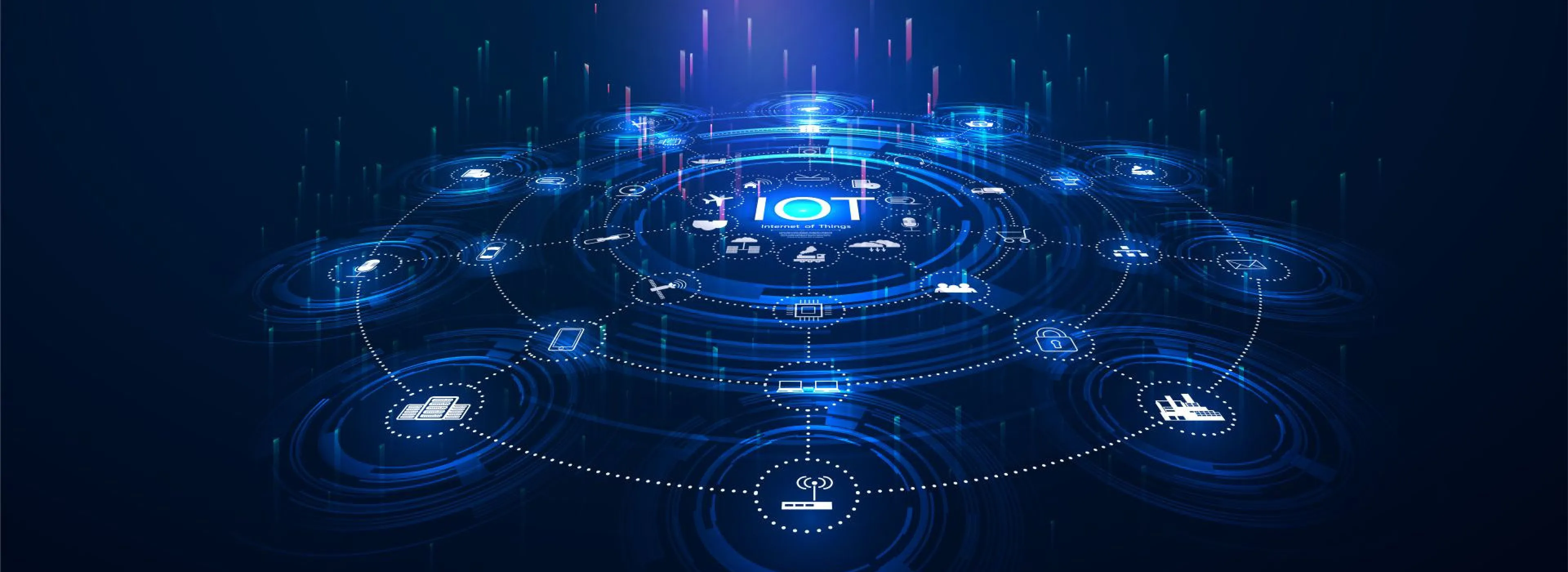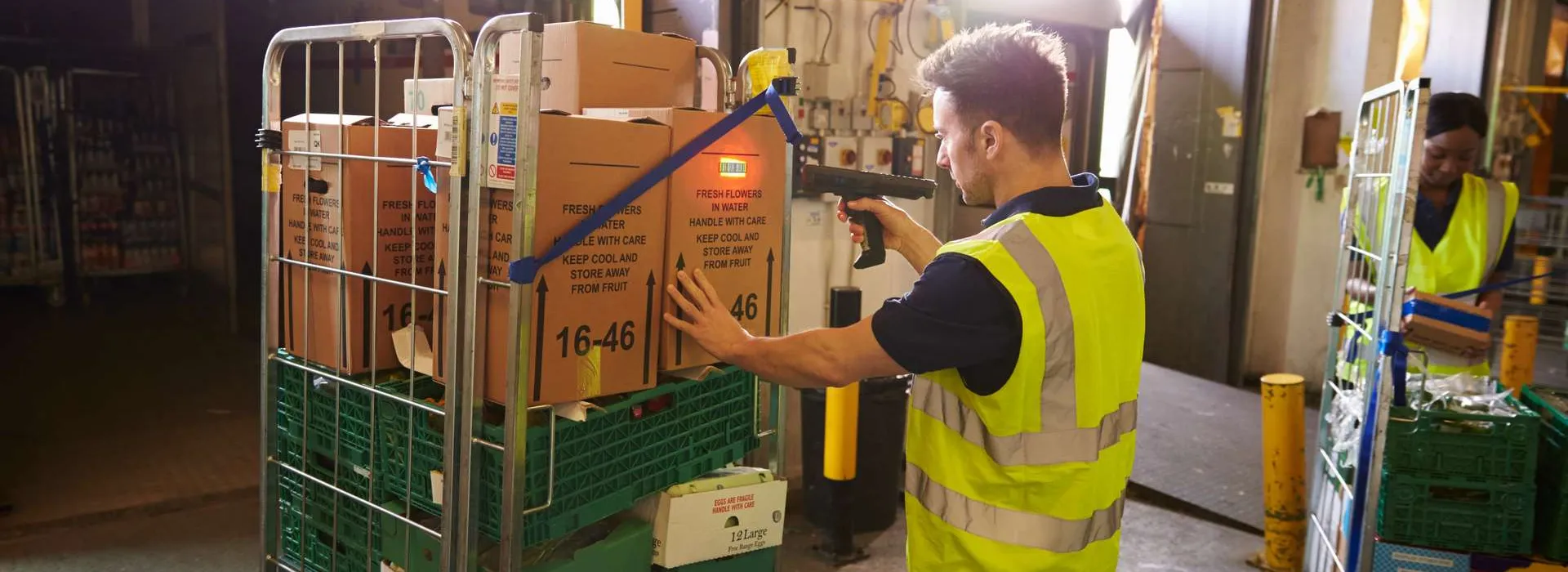If you want more warehouse content or are curious about “Warehouse Digitalization,” you can follow us on LinkedIn, YouTube, X, or Facebook. You can also message us through our contact page if you have other inquiries. We’ll be happy to help.
In one of our recent blogs, we talked about what IoT (Internet of Things) is and whether it’s the right time to adopt it. However, since IoT in the warehouse is a fairly new concept/technology, warehouse managers, technology directors, and higher decision-makers might find it somewhat difficult to plan and, of course, even more challenging to implement.
The primary reason for this is the overwhelming number of moving parts, details, and infrastructure that are (seemingly) needed to successfully implement this warehouse technology.
Download Free Guide: 7 Technologies That Will Change the Warehouse
This blog provides basic knowledge about the essentials of industrial IoT (IIoT) that you will need for a successful deployment.
Here are 5 essentials of IIoT that you must consider:
1. Equipment
The actual deployment of the industrial Internet of Things (IIoT) lies in the successful deployment of censoring devices such as temperature, accelerometer, proximity, motion sensors, and actuators, among others.
The first thing you must understand is what exactly you are trying to measure and/or detect (e.g., the acceleration of a forklift while in operation). Then, consider factors such as IT infrastructure, systems, and implementation/maintenance costs.
The basis of IoT in a warehouse is sensors and actuators embedded into objects and/or devices. Some of the sensors and actuators that you might consider adopting include, but are not limited to:
- RFID tags on parcels and pallets to efficiently & effectively track cargo within the warehouse
- Barcode scanners with RFID capabilities to quickly find packages in crowded areas
- Temperature and humidity sensors in cold storage facilities to track in real-time temperature & humidity
- Motion, speed, and proximity sensors and actuators in forklifts to prevent accidents
- GPS, motion, and speed detectors embedded in wearable devices to detect operational inefficiencies
Apart from this, you must also consider other devices that nicely complement an IoT ecosystem. These are:
- Rugged tablets
- Mobile computers
- Industrial smartphones
- Wearable devices such as smart watches and glasses
The joint action of sensors and actuators makes industrial IoT such a powerful technology in warehouses and distribution centers.
Not only can these sensors help streamline and direct movement and operations, but they can also help you collect invaluable data that can later be used to detect inefficiencies (e.g., reducing walking time), increase productivity, and prevent accidents.
2. Network
The power of the Internet of Things lies in its potential to be the “Internet of Everything,” as Cisco terms it—meaning its ability to interconnect devices, people, and objects. For this to become a reality, IoT and all its components depend on a reliable network infrastructure.
To interconnect all the IoT endpoints (sensors and actuators), you need a well-designed (and implemented) wired and wireless network that reliably and securely transmits communications across the entire IoT ecosystem.
In the case of a wired infrastructure, it is highly recommended to use Cat6e cabling and gigabit connections (switches and routers with at least gigabit capabilities) to avoid network bottlenecks, latency, and/or packet loss.
For wireless connectivity, it is highly recommended that a wireless infrastructure be implemented that is equipped with wireless controllers (used to centralize the management of all wireless access points) that support authentication and encryption protocols such as MAC address authentication or X.509 certificates.
These authentication and encryption protocols will help you ensure that only approved devices are connected to your network (authentication) and that information is transmitted securely over the air (encryption).
3. Security
Considering the amount of information to be collected within a warehouse IoT ecosystem, the security side of the equation must be carefully considered.
Why? Failing to do so can result in the leak of sensitive customer information (e.g., high-value cargo and customer details) and specific operational processes and procedures that provide your business with a competitive advantage.
So, to avoid this, it is extremely important that the following questions are carefully considered during the planning and deployment phases of a warehouse IoT implementation.
- How will you control what devices (sensors, actuators, mobile devices, people, etc.) can connect and participate in the IoT ecosystem? – Authentication.
- How will data be protected while in transit (moving between endpoints and the database)? Data integrity.
- What data repository (e.g., database) can guarantee that only the right people and systems have access to write and read data? – Authorization
- Who will be responsible for monitoring the security of the IoT ecosystem and conducting system maintenance intended to address and correct system vulnerabilities?
No system is 100% secure. Therefore, people and processes should be in place to protect the system and effectively respond to a security incident. It is important to consider all these questions and proactively find the correct answers and solutions to them.
Security is one of the prime concerns that haunts the deployment of warehouse IoT. A study by Aruba, a Hewlett Packard Enterprise company, involving IoT users reveals that 84% of respondents reported that they have already experienced an IoT-related breach at least once.
4. IoT Platform
An IoT ecosystem is a complex organization of interconnected devices that includes sensors, devices, software, equipment, security systems, servers, and databases, to name a few.
Considering the large number of components required to interact reliably and securely, most companies depend on what is known as an IoT platform to achieve this purpose.
An IoT platform is simply a middleware (mostly cloud-based) used to interconnect all the pieces of the IoT ecosystem. Think of it as the glue that connects all the parts within the ecosystem and stores, processes, and analyzes all the generated data.
So, instead of developing your own IoT platform, it is highly recommended to leverage an established third-party IoT platform (cloud IoT) to manage all the components of your warehouse IoT.
Here are some of the most recognized IoT cloud vendors.
- XMPRO
- Honeywell Sentience
- Amazon AWS
- AT & T M2X
- Amplia IoT
- MS Azure
- TempoIQ
- Losant IoT
- Uptake
- IBM Watson IoT
- AirVantage
- Bitstew Systems
- Thethings.io
- Cumulocity
- Bosch IoT
- GE Predix
- SAP Hana Cloud
- Intel IoT
- Siemens MindSphere
- Cisco Jasper
- ThingWorx
- C3IoT
- Meshify
While Azure, AWS (Amazon Web Service), IBM Watson, Google Cloud Platform, and Salesforce IoT are the biggest names in IoT news right now, several other smaller players also suit IIoT rather well.
5. Analytics
Along with choosing a suitable platform for IoT in the warehouse, you will also need to look into IoT analytics capabilities.
IoT analytics means applying data analytics tools and methods to analyze and make sense of large volumes of collected data—remember, sensory devices will be collecting data (status, events, etc.) in real-time. Herein lies the power of IoT in warehouse and distribution center operations.

Data analytics holds a crucial place in the IoT scheme of things. Not only will it help you analyze large volumes of data generated by your IoT ecosystem, but it will also structure all the unstructured data to help you make sense of it.
Remember, every component within the ecosystem will generate large volumes of data, so organizing it is critical to make it meaningful and useful. Without proper organization of all the generated information, warehouse managers and other decision-makers will be unable to understand it and take actions to drive efficiency within the warehouse.
Down the line, IoT data analytics is the very tool that will help you drive efficiency and profitability by understanding in detail operational inefficiencies and allowing you to implement effective solutions that will yield tangible operational efficiencies.
Creating a smart warehouse with IoT is no longer hype. This technology is already making inroads into many warehouses and distribution centers across the world. There is no doubt that IoT in warehouses is on its way to becoming a reality.
While this technology continues its natural evolution, warehouse managers and other decision-makers must start preparing and planning for budgeting, planning, and deploying IoT within their facilities.
As always, if there is anything else that you would like to know about the Internet of Things in warehouses or distribution centers, or if you need some tips on warehouse technology, do not hesitate to contact us or comment below.












